When it comes to promoting your brand on social media, hashtags are a great way to increase engagement and drive brand awareness. Also known as the pound sign (#), the hashtag is very effective in making your content discoverable to a captive audience.
Hashtags were first widely used on Twitter (now X), but they have become commonplace on other social media platforms including Facebook, Instagram and TikTok, or ‘tags’ on newcomer Threads. On many, hashtags now act as a search engine for users to find information and ask questions.
Mastering the hashtag gives you a powerful way to engage your audience and increase your social impact at no cost other than the time it takes to do some research and pay attention to trends.
Used correctly, hashtags give context to your social posts and help people interested in your topic find your brand and help expand your influence and followers.
Free 2024 Social Media Calendar
What is a Hashtag?
A hashtag is a word or keyword phrase preceded by a hash symbol (#). It’s used within a post on social media to help those who may be interested in your topic to be able to find it when they search for a keyword or particular hashtag. It helps to draw attention to your posts and encourage interaction.
For example, if you’re a local deli or store, you could use #sandwich or #foodie when you post a photo of that lunch you really liked!
What Do You Do with Hashtags?
When using a phrase as a hashtag, you spell it out without spaces, such as #usinghashtags. It can include numbers but not symbols or punctuation.
The hashtag can be placed at the beginning, middle or end of your social media post or comment, and it allows what you have written to be indexed by the social media network. With this strategy, people who are not your fans or followers can still find your content.
If you need some guidance on how to research keywords to feed into your hashtags, check out our infographic for five easy steps.
“15% of consumers prefer to search on social media rather than search engines, while 31% use them to find answers to their questions” HubSpot
What Does a Hashtag Mean on Social Media?
While it sounds simple to place a hashtag in front of your keyword, there’s some other basic information that’s important to know when you are trying to be found by using hashtags.
Using hashtags only makes a difference in your social media strategy when done the right way.
Tips for using hashtags
- Don’t get carried away using a hashtag every couple of words. The number of hashtags that can be used depends on which platform you are using. But in most cases, one to three hashtags can have more impact than a lot of them.
- Keep hashtags short and memorable rather than trying to use a lot of words in one tag. Remember #BlackOutTuesday being used successfully as part of the Black Lives Matter movement in America in 2020?
- Don’t try to choose hashtags that are too clever or obscure. If you choose a tag that no one is going to search for, it won’t benefit your marketing as it won’t be found!
- Use hashtags that are detailed and specific as this will lead to better results than broad or general ones. Broad terms are not likely to be searched, and if you use them, your content will probably get lost in a sea of unrelated content.
- Focus on hashtags with low or medium-volume search to hit the right audience. Using high-volume hashtags runs the risk of attracting spambots.
- Don’t try to force hashtags into every post. Instead, use them when they add value and are likely to stimulate conversation and interaction.
- Hashtags can not only attract members of your target audience but can also be used to research your competition. Search using hashtags, and you will uncover relevant content related to your topic.
Why are Hashtags Important?
Hashtags are important on social media as they enable your content to be found by the right people. Using relevant hashtags helps give context to your content and drives traffic so that you can boost views, likes, and shares. The key is finding the right hashtags that match your content and appeal to users.
How to Find Effective Hashtags: Start with Influencers
There can be a fine line between hashtags that are too general and hashtags that are too complicated or can’t be found. A good place to start to determine what hashtags are effective is by paying attention to what hashtags influencers use in your niche.
The chances are you have a good idea who the influencers are that are capturing the attention of your audience, but if you are brand new to a niche, how do you find them?
For a particular niche, the influencers are the people whose voices are most trusted and listened to, such as celebrities, famous bloggers, and YouTube users. There’s also a great bank of B2B influencers that you can use to create marketing impact, just make sure they are relevant to your business.
A great tool to use to identify influencers is BuzzSumo. Using this tool, you can find the top content, bloggers, publications and writers in your niche. Follow the top influencers, and notice the hashtags they use regularly to tap into relevant keywords and trends.
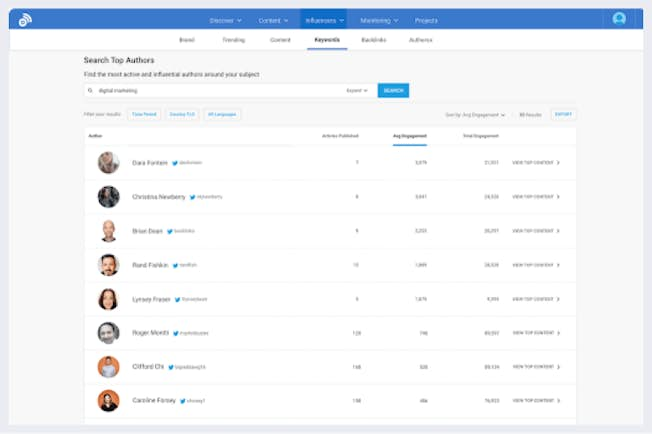
Once you identify relevant influencers, you should use an influencer tracker tool to keep a list of important factors such as social channels used, specialty and relevance to your brand.
Other Research Tools for Finding Hashtags
Other research tools are specifically geared to narrowing down information about hashtags. Look into the following tools for help in identifying effective hashtags in your niche:
- RiteTag offers instant hashtag suggestions in real-time engagement.
- Hashtagify.me is a tool that allows you to search for popularity and trends of hashtags.
- Keyhole provides you with a free search function and gives you real-time data on a range of factors.
- Copyai hashtag generator uses AI to create hashtags for your social posts.
- Hashtagforlikes is a generator tool for Instagram and TikTok that searches for live stats to help you create campaigns.
- All Hashtag creates hashtags for a range of social platforms
- Hashtag Generator Tool is no frills and was created by Influencer Marketing Hub for Instagram and TikTok
- Keyword Tool enables you to search for Instagram hashtags based on a keyword
Remember to search for keywords related to your content on social platforms to see what hashtags come up. In addition, be sure to use social listening tools to understand what users are talking about and any trends that you could relate to your brand.
How to Use Hashtags on X
Using relevant hashtags on X (previously Twitter) can increase your engagement, as long as you don’t go overboard. One or two hashtags per tweet should be enough. When you use a couple of hashtags and ask your followers to retweet, this can result in even more engagement.
Here’s a simple use of relevant hashtags by Adidas.
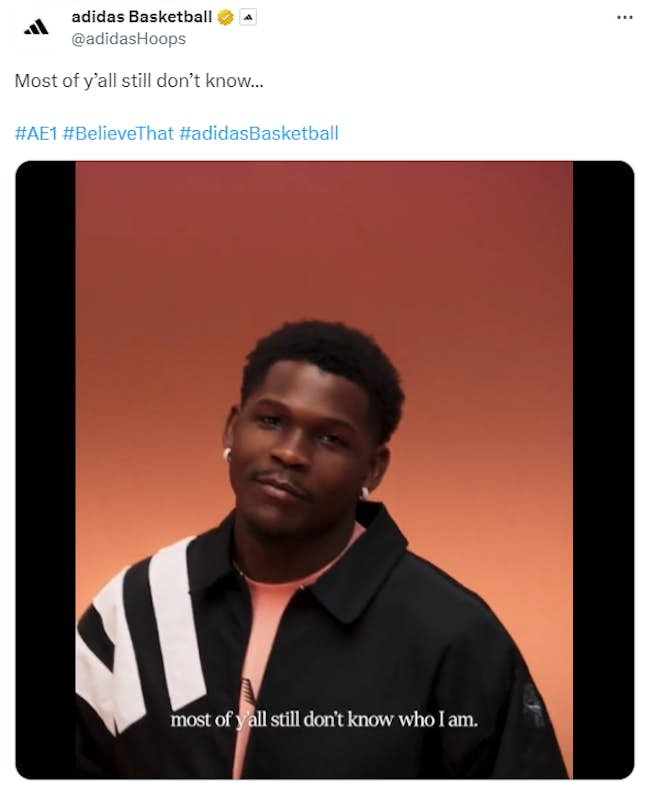
The use of hashtags on X will make your post accessible when people search for your tag. It can also help you to find conversations to get involved in. For even more impact on this platform, research trending hashtags.
How to Use Hashtags on Facebook
When you’re trying to get more exposure for your Facebook posts, using hashtags may help as they can boost organic reach. However, they are not as popular on Facebook as on other channels.
On Facebook, it’s important not to use too many hashtags. Usually, it’s recommended to only use one or two. More than that will make you seem unprofessional and could annoy those reading your posts.
You can find relevant hashtags to use by simply typing a keyword into the search bar.
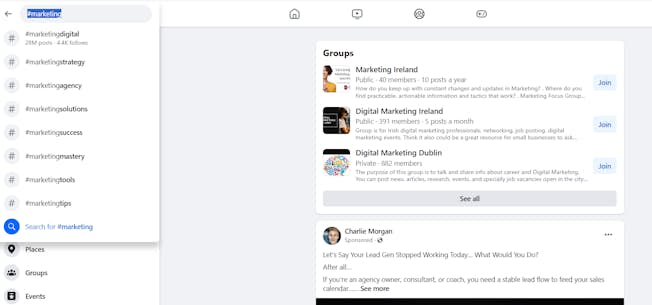
It may also be worth going back to your top-performing Facebook posts and reposting them with relevant hashtags. This not only reuses old content that resonated with your followers but may attract new ones that have an interest in your product or service.
How to Use Hashtags on Instagram
Using hashtags on Instagram can increase reach and drive engagement. So feel free to use up to ten or eleven relevant and popular hashtags for Instagram Stories or Reels to reach the widest audience possible.
A combination works well on Instagram such as popular hashtags, location hashtags, niche hashtags, content-related hashtags and branded hashtags.
You can use as many as 30 hashtags on a regular post on Instagram. You probably don’t need to use that many, but it’s good to know that using more is acceptable here, so you can experiment.
See this example to get an idea of what type of hashtag could work.
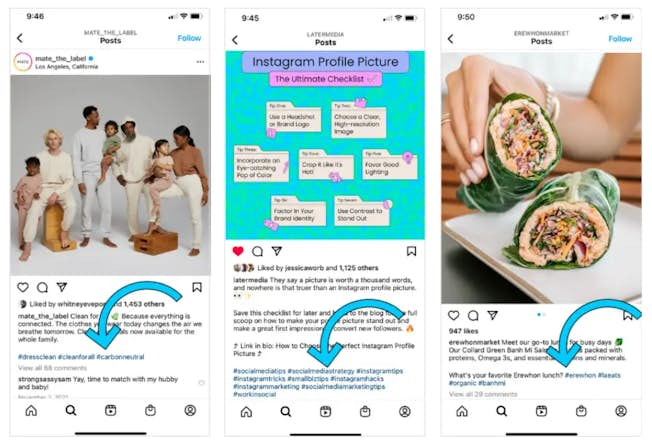
Use the search box to see what hashtags influencers or competitors use to engage on Instagram. Since this is the best platform for multiple hashtags, try a wide variety and use them on posts, photos and comments.
How to Use Hashtags on Pinterest
Hashtags are a great way to help people find your content based on keywords on Pinterest and group them into categories.
Over the past few years, Pinterest seems to have reduced the importance of hashtags - mainly because spammers were using hashtags to get to the top of feeds as posts with hashtags were once put in chronological order. Plus, hashtags no longer seem to be clickable.
But hashtags still have a place on the platform. The key is to use specific and relevant hashtags that describe the content in the pin. This will help your content get found particularly if you use Pinterest for Business.
The image below is an example of the Pins that came up for the hashtag #digitalmarketing.
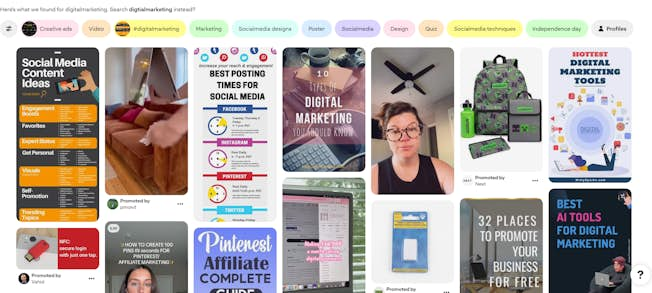
If you’re looking for inspiration, check out these 3 inspirational Pinterest campaigns.
How to Use Hashtags on TikTok
TikTokers use hashtags on their videos to categorize content. These hashtags are also clickable meaning that your content will feature alongside other relevant videos. Like the other social platforms, using hashtags on TikTok helps to increase reach and helps the TikTok algorithm to decide which users see your content on the all-important ‘For You’ page.
The limit for captions on TikTok is 4,000 characters, so you have room to play with hashtags and see what works. Try to mix it up by using popular and niche hashtags to get the most reach.
Be aware that hashtags on TikTok change frequently so you need to keep your eye on the ‘Discover’ page to see what’s trending.
How to Use Hashtags on LinkedIn
On LinkedIn, people haven’t always used hashtags, but they work on this platform the same way as any other. Not only can they help you to expand your organic reach but you can build a community around your brand.
One to three hashtags are usually recommended for LinkedIn. These can be added using the ‘Add’ button under ‘Hashtags’
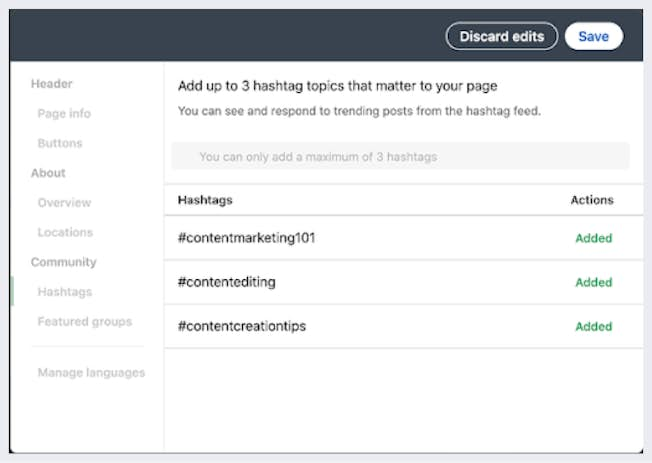
The use of hashtags on LinkedIn can get your posts in front of people outside your network. Let’s say you have 500 LinkedIn connections, posting without a hashtag limits your content to that network. However, if you use a hashtag such as #PPCMarketing, you may triple the number that sees it driving up your post engagement and credibility.
How to use Tags on Threads
A newbie to the social media market, Threads is already picking up pace amongst users. To tap into the power of hashtags, the network has launched tags to help categorize posts and help in discovery.
The tag works differently from hashtags on other platforms as instead of showing up as a hashtagged word, it is converted to a blue-inked hyperlink.
Typing a “#” into a post brings up a card with the topic you’re tagging or similar ones. Beneath that, each topic comes with a count of related posts like Instagram.
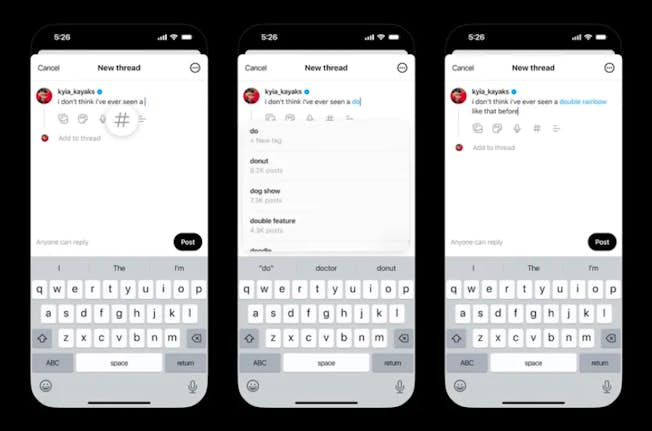
The feature is currently being tested in Australia but may roll out to more locations in 2024.
How to Design a Hashtag Strategy
Choose specific hashtags whenever possible, because the more specific you can get, the more likely you are to attract a targeted audience. Use capital letters at the front of each word, although not required, to give context to your post and show what you are trying to communicate.
Your competition is probably already using hashtags in their social media strategy. How successful are they at engaging your mutual audience? Pay attention to how much or how little they use hashtags and what the response is.
There are no definitive answers when it comes to which hashtags you should use or how you should approach your strategy.
A successful hashtag strategy starts with knowing your audience and taking the time to be familiar with what works on each platform. Beyond that, you will continue to learn what works (and what doesn’t) by using hashtags as part of your social media strategy and analyzing your results.
Hashtags are a great tool for communicating with your followers as well as increasing engagement and attracting new customers.
Use Hashtags to Become a Social Media Superstar
Whether you’re new to social media or a seasoned veteran, DMI’s certified Social Media Marketing course will help you understand the ins and outs of social media networks. From Facebook to YouTube and TikTok, you will understand how to drive engagement and extend reach. You will also learn how to devise a successful social media strategy and create engaging social content (hashtags included!)
Updated 2022
Related
Upgrade to Power Membership to continue
your access to thousands of articles, toolkits, podcasts, lessons and much much more.
Become a Power Member- Login
- View Courses
- - - -
- Courses
- Resources
- - - -
- My Account
- Change Password
- Logout





